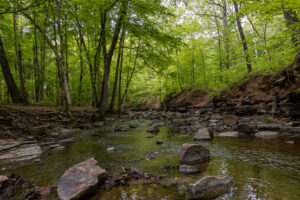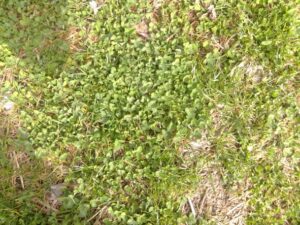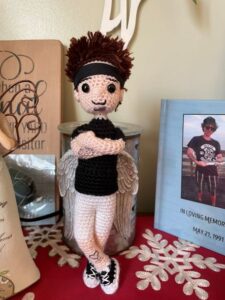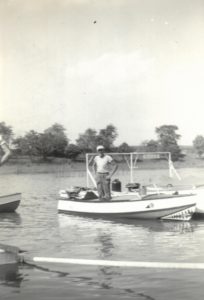
By Robin Mayes, Farm Educator
Growing up on a farm along the Scioto River offered lots of opportunities for water fun. We also had a large pond on the farm with a creek that spilled into it, and even had an inground pool at a time when not many people did. We ice-skated in winter and swam in summer, fishing was always an option, and nearby quarries that had filled with water provided crystal clear swimming when I was young.
Mud was fun too! One day, when Mom had gone to town and Dad was “watching” us, my sister, Joanne and I were running (literally) around the farm riding our imaginary horses (we didn’t have any real horses yet). A summer afternoon rain shower had left a large puddle in one of the pastures. We ran through it a couple of times until one of us “slipped” and fell in. That was all the excuse we needed for a full-on swim in the mudhole. Oh, the fun we had in that mud … until we realized Mom would be home soon. There would be no salvaging those shorts after we had spent the afternoon sliding down a mud slope into a foot-deep puddle!
My family boated on Delaware Lake since its early days (the dam was completed in 1951). Although I had not been born yet (I am not quite THAT old!), I have seen the photos of the two boats that Dad and Grandpa had resurrected from some state of disrepair. They called them Big Mo and Little Mo – each sporting a menacing grin painted across the bow like the WWII bombers Dad had flown in. Big Mo had a traditional outboard motor. Not satisfied to go with the norm, Dad outfitted Little Mo with a few more horsepower – a car engine of some kind! Whenever it would run, I guess it lived up to the description of ‘speed’ boat.
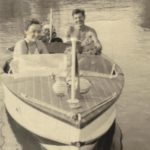
As an inventor, Dad was always trying something new and of course, water often played a role in his experiments. I clearly remember one that went awry. He had two large fiberglass pontoons that he had removed from something. On a lark, he fashioned straps inside the top of them, in which to fasten his feet. I still see him sitting on the side of the swimming pool attaching these hollow floating devices to his feet. He planned to walk on water. This attempt went south quickly; when he stood, he remained upright just a second or so before the pontoons flipped him over, leaving him upside down, submerged, with his feet tightly strapped inside these floating death-traps! He struggled out of the situation and that was one experiment I never saw him repeat.
Dad really felt that water would be that CLEAN fuel of the future. He was always fascinated by the fact that one can extract the hydrogen molecules from the oxygen molecules in water just by applying an electric charge. He began by entertaining us with exploding soap bubbles! He devoured any reading material he could find regarding hydrogen power. The last few years of his life were spent exploring ways to use hydrogen to power combustion engines. He created various designs to more efficiently generate hydrogen.
Here at Gallant Farm, we have the convenience of indoor plumbing and a modern hot water heater. In the early decades of the 20th century, Central Ohio farm families would not have had this luxury. Water came from a well with a hand pump in the yard, unless one was progressive enough to have a pitcher-pump at the kitchen sink. Water was heated in large pots or copper boilers on top of the woodburning cookstove for laundry and baths. The water reservoir on the side of the stove was kept filled and that water was always ready for dishes or mopping or to thaw-out the yard pump on winter mornings.
If WATER floats your boat, come to Gallant Farm Saturday, May 18 at 10 AM to learn about saving water by utilizing cisterns and rain barrels. And visit the World of Water displays all summer long at Deer Haven Park and Shale Hollow Park.




